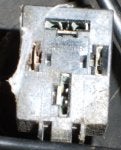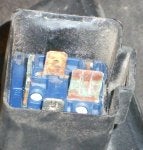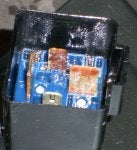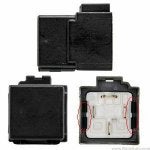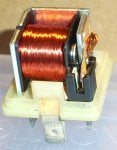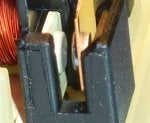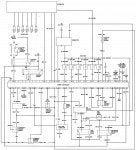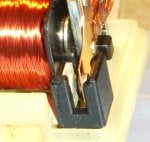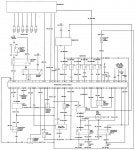1992 Dodge Grand Caravan LE, 3.3L
NON EGR system
After all the work i did to this van i thought its problems were over. But as of last night it has developed a hard starting problem. For a history of this van see this thread.
http://www.dodgetalk.com/forums/showthread.php?t=343999
Last night the temperature went down to 33 degrees F and i had to crank it a little to start. After that it was fine. I drove it to the gas station 2 miles away and it started again no problem from there.
Today at noon high 30‘s it did not want to start i cranked it for 3 to 5 seconds and let it sit for several minutes and then it started fairly well. I drove it to several stores over the next couple of hours and had no problems with it.
When i got home i put a fuel pressure gage on it and turned the key to the on position, not start and i saw around 40 psi. I then started the van and after a minute shut it off and the gage was at 48 psi.
I let it sit for 5 hours like this getting cold. Went back out and the fuel pressure was at zero. I turned the key to on position for 2 seconds then off and checked the gage. I had 40 psi or so. I then tried to start it and it just kept cranking. I stopped cranking let it sit for 15 seconds and tried again and it cranked more than normal but not to bad and started. I looked at the dash for any warnings and saw none and shut it off. I then waited about 10 minutes and the fuel pressure was down to 30 psi. After about 30 minutes the fuel pressure was 20 psi.
The key codes are 12 and 55.
After it starts it acts normal, it idles and runs perfectly.
NON EGR system
After all the work i did to this van i thought its problems were over. But as of last night it has developed a hard starting problem. For a history of this van see this thread.
http://www.dodgetalk.com/forums/showthread.php?t=343999
Last night the temperature went down to 33 degrees F and i had to crank it a little to start. After that it was fine. I drove it to the gas station 2 miles away and it started again no problem from there.
Today at noon high 30‘s it did not want to start i cranked it for 3 to 5 seconds and let it sit for several minutes and then it started fairly well. I drove it to several stores over the next couple of hours and had no problems with it.
When i got home i put a fuel pressure gage on it and turned the key to the on position, not start and i saw around 40 psi. I then started the van and after a minute shut it off and the gage was at 48 psi.
I let it sit for 5 hours like this getting cold. Went back out and the fuel pressure was at zero. I turned the key to on position for 2 seconds then off and checked the gage. I had 40 psi or so. I then tried to start it and it just kept cranking. I stopped cranking let it sit for 15 seconds and tried again and it cranked more than normal but not to bad and started. I looked at the dash for any warnings and saw none and shut it off. I then waited about 10 minutes and the fuel pressure was down to 30 psi. After about 30 minutes the fuel pressure was 20 psi.
The key codes are 12 and 55.
After it starts it acts normal, it idles and runs perfectly.


